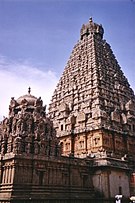ජිංජී නායක්වරු
Appearance
ජිංජී නායක්වරු | |||||||||||||
|---|---|---|---|---|---|---|---|---|---|---|---|---|---|
| 1509–1649 | |||||||||||||
 | |||||||||||||
| අගනුවර | ජිංජී බලකොටුව | ||||||||||||
| පොදු භාෂා(ව) | දෙමළ, තෙලිඟු | ||||||||||||
| රජය | රාජාණ්ඩුව | ||||||||||||
| රජ | |||||||||||||
| ඉතිහාසය | |||||||||||||
• Established | 1509 | ||||||||||||
• අහෝසි කළේ | 1649 | ||||||||||||
| |||||||||||||
| ලිපි මාලාවක කොටසක් වන |
| තමිල් නාඩුවේ ඉතිහාසය |
|---|
 |
ජිංජී නායක්වරු (සෙංජි නායක්වරු) යනුවෙන් හැඳින්වෙන්නේ ක්රි.ව. 16වන සිට 18වන සියවස දක්වා තමිල් නාඩුවේ ජිංජී කුමාරධානිය පාලනය කළ පාලකයෝ ය. They were subordinates of the imperial Vijayanagara emperors, and were appointed as provincial governors by the Vijayanagar Emperor who divided the Tamil country into three Nayakships viz., Madurai, Tanjore and Gingee. Later, after the fall of the Vijayanagara's Tuluva dynasty, the Gingee rulers declared independence. While they ruled independently, they were sometimes at war with the Tanjore neighbors and the Vijayanagara overlords later based in Vellore and Chandragiri.
See also
[සංස්කරණය]References
[සංස්කරණය]External links
[සංස්කරණය]- Epigrāphiya Karnāṭaka (5,1): Hassan district 1: Hassan, Belur, Channarayapattana, Hole-Nasipur, Arkalgud, Manjavabad, Arsikere Taluks. Available from: http://idb.ub.uni-tuebingen.de/diglit/EC_05_1_1902/0929
Bibliography
[සංස්කරණය]- Srinivasachari, G. S. (1943), A History of Gingee and its Rulers, Madras: Annamalai University, https://archive.org/details/in.ernet.dli.2015.500497/page/n5
- Subrahmanyam, Sanjay (2002). The Political Economy of Commerce: Southern India 1500–1650 (Reprinted ed.). Cambridge University Press. ISBN 9780521892261.
Further reading
[සංස්කරණය]- Questioning Ramayanas – by Paula Richman
- Velcheru Narayana Rao, David Shulman. Classical Telugu poetry: an anthology, Page 63.
- B. S. Baliga. Tamil Nadu district gazetteers, page 427.
